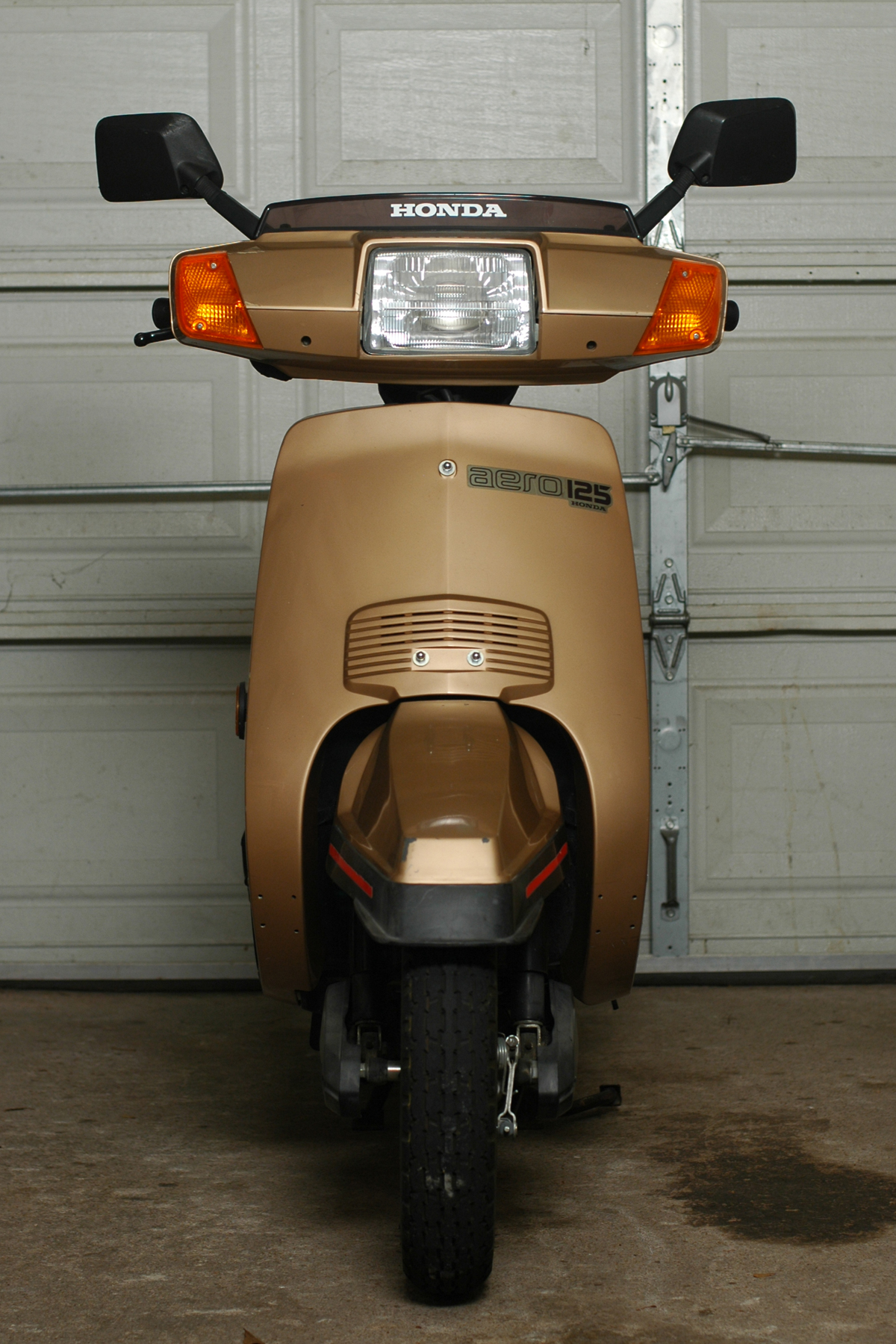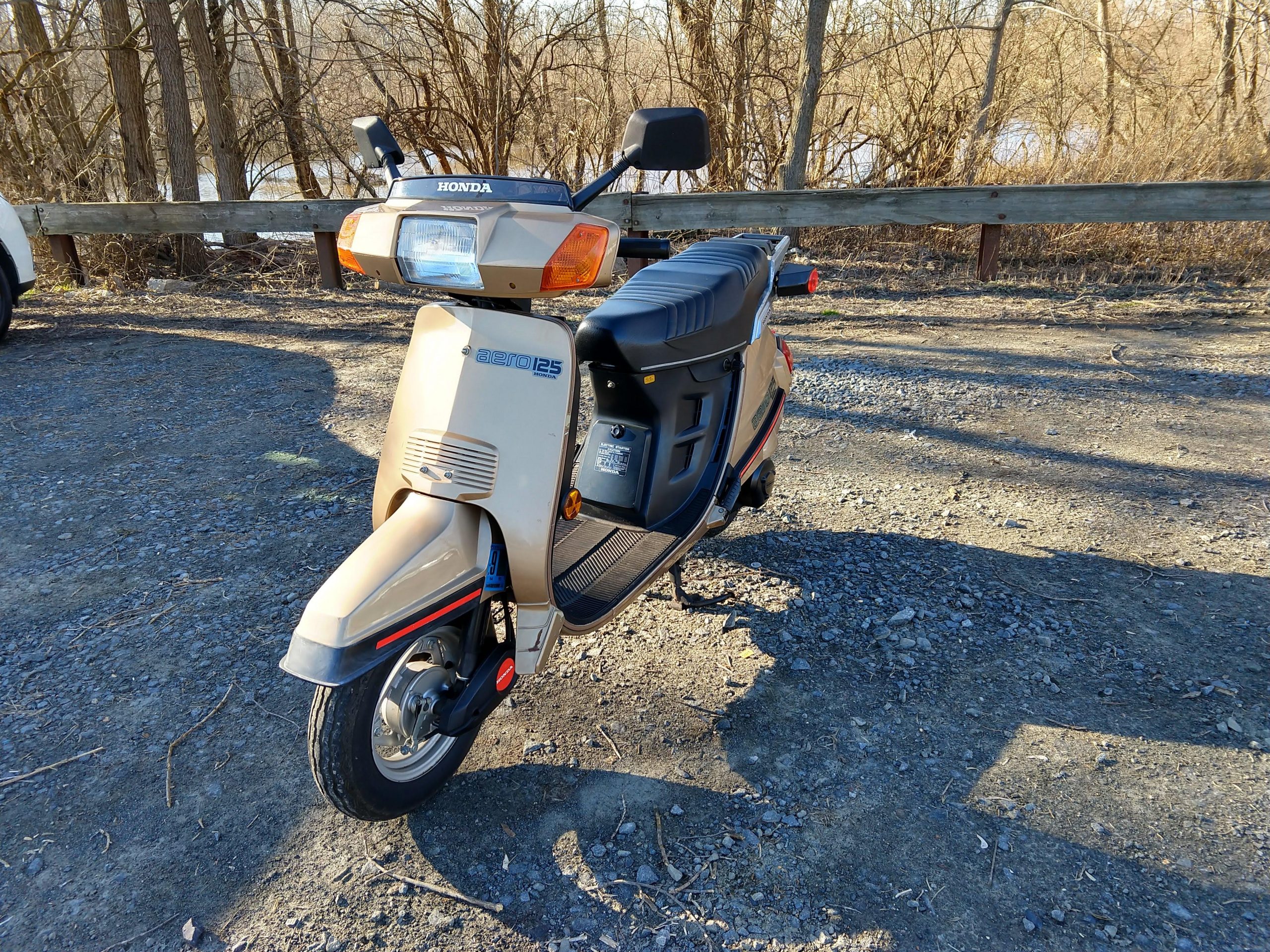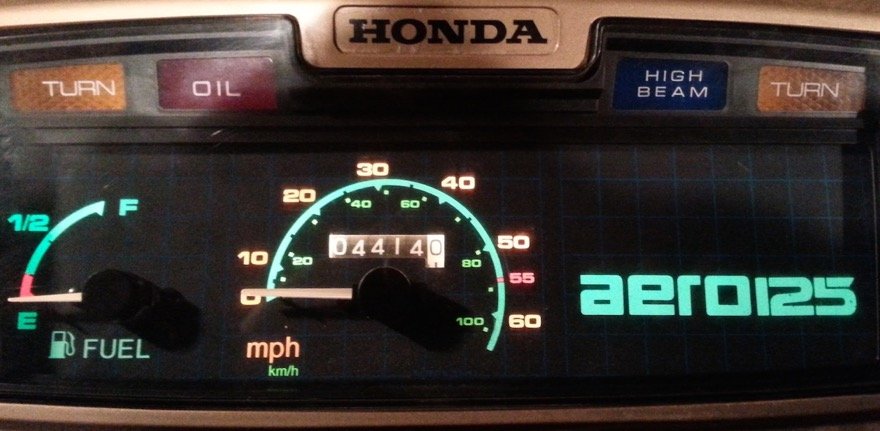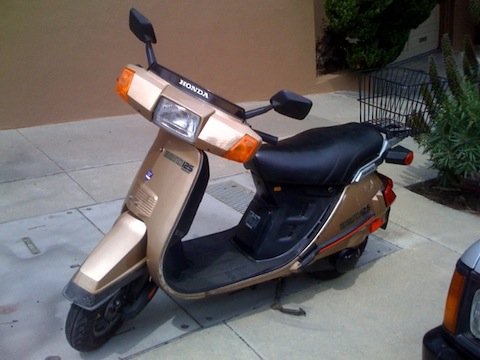HONDA AERO 125 (NH125)

Outside North America, this scooter was sold as the Lead 125 is quite a few countries from 1983 – 1987. A few neat ad and brochure scans showing the various versions of the Aero 125 can be seen here.
Engine
The 125cc Aero is the largest 2-stroke scooter Honda has ever sold in North America. Honda lists the top speed of this scooter at 54 mph but most owners report they can hit 55-65mph. However, the speedometer supposedly reads 10% high so Honda’s claim of 54 mph sounds about right. That’s not really highway touring speeds but it’s enough to venture out of town on 55 mph back roads if you’re brave. I suspect the Aero 125 accelerates strongly and is able to hold its speed well up hills and into brisk winds because it’s got an impressive 9.0 lbs/ft of torque. For comparison, the Elite 125 only has 7 lbs/ft. Both scooters have similar horsepower ratings. The Aero 125 achieves 55-60mpg under normal use.
Storage & Convenience
The Aero 125 boasts some nice features like a brushed aluminum rear rack, dual rear shocks to handle beefier loads and a halogen headlight. The European version (named the Lead 125) also had a tachometer which is pretty neat. If you’re wondering why there is a big space on the right side of the gauges (where Honda wrote ‘aero125’), it’s because the dash was designed to have a tach here. It’s frustrating that so many scooter manufacturers feel the need to remove a few features for the North American market so they can lower the MSRP a few bucks. Along these lines, Honda also removed the kickstarter on North American Aero 125’s. This isn’t a huge problem but having a kickstarter is quite nice for those emergency situations. If you really feel ambitious you can attempt to source overseas parts to retrofit a kickstarter but this is a daunting task because you need quite a few parts.
In the storage department, the Aero 125 is well equipped. It has a generous sized glovebox and some storage under the seat, enough to fit a couple books or maybe your lunch. Check out the brochure scans at the bottom of this page for a look.
 Comparison
Comparison
If you’re trying to find a unique and rare scooter, the Aero 125 is certainly a great choice. It accelerates solidly, has good reliability for its age and ample storage. However, if you’re simply trying to find a practical scooter around 125-150cc to provide you with reliable transportation, then an Elite 125/150 or Yamaha’s Riva 125 are probably better choices. Both of those scooters are 4-strokes, which means better fuel economy, lower pollution, no 2-stroke smell and a longer engine life. Plus they are both considerably more popular, so you’ll have an easier time finding parts and other owners to talk to.
The Aero’s top speed is similar to Honda’s Elite 125 and Yamaha’s Riva 125 (both are good for 55-60mph) but it’s notably slower than the Elite 150 (65mph). This is pretty significant difference if you’re driving a lot of 55mph roads. It can be the difference between keeping up with traffic and being the slowest vehicle on the road. Given the choice, I would get the Aero 125 because I like its style and rarity, but the Elite 150 or a big Riva is probably the practical choice.
Pros:
- Strong acceleration
- Tons of go fast potential (if you’re a DIY person)
- Rare (if you’re into this)
- Brushed aluminum rear rack
Cons:
- Rare (fewer parts available and less owners to talk to)
- Not that fast for a 125cc, especially not for a 2-stroke
- 2-stroke (noise, smell, pollution, mileage, engine life)
Links:
Aero 125 Brochure / Ad Scans Page
Aero 125 Service Manual – Essential for working on your Aero 125.
MotorscooterGuide Forums – Visit the forum on this site to chat about your scoot.
Jack’s Scooter Shop: Maintenance Chart for the NH125.
Key Specs:
- Engine: 124cc, 2-stroke, air-cooled, oil injected single cylinder
- Power: 9.5hp @ 7000 RPM, 8.7 lbs-ft torque @ 5000 RPM
- Bore & Stroke: 55mm x 52.4mm
- Compression Ratio: 6.7:1
- Carb: 18mm slide
- Claimed top speed: 60mph
- Ignition: Capacitor Discharge
- Starter: Electric
- Final Drive: Belt (6.1:1 ratio)
- Length: 68.9” / 1750mm
- Width: 25.4” / 645mm
- Height: 42.9” / 1090mm
- Wheelbase: 47.4” / 1205mm
- Seat Height: 29.7” / 740mm
- Ground Clearance: 4.3” / 110mm
- Spark Plug: NGK BPR6HS
- Fuel Milage: 55-60mpg
- Fuel Capacity: 7.0 litres / 1.9 gallons
- Rims: Cast Aluminum
- Tires: 3.50-10 4PR Tubeless (Front and Rear)
- Suspension: Bottom Link (Front), Hydraulic Dampers (Rear)
- Brakes: Drum / Drum
- Dry Weight: 196.2 lbs
- Years Sold: 1984
- Colors: Candy Ruby Red, Light Copper Metallic
- MSRP: $998



 Comparison
Comparison